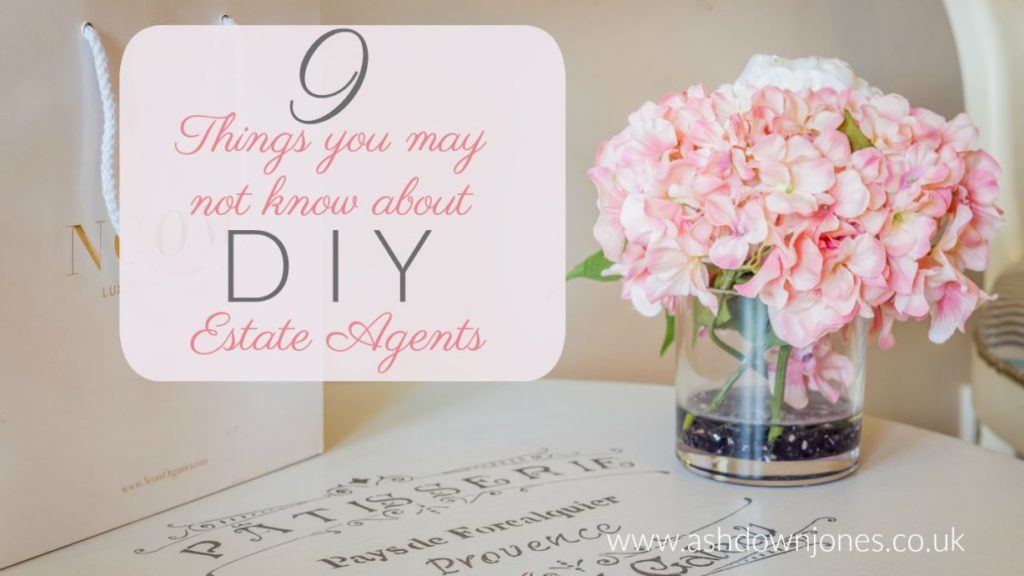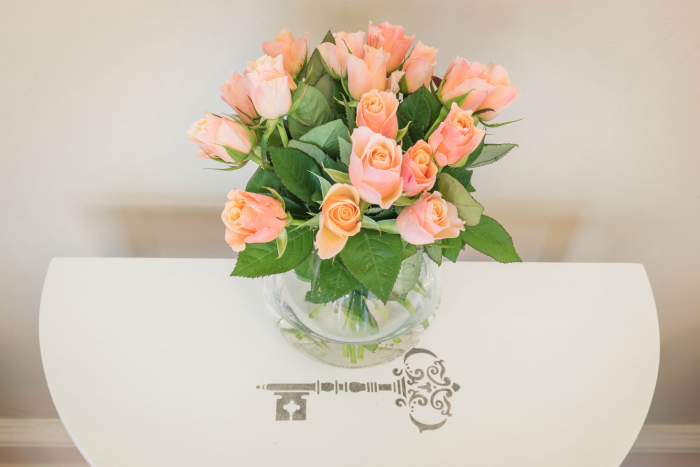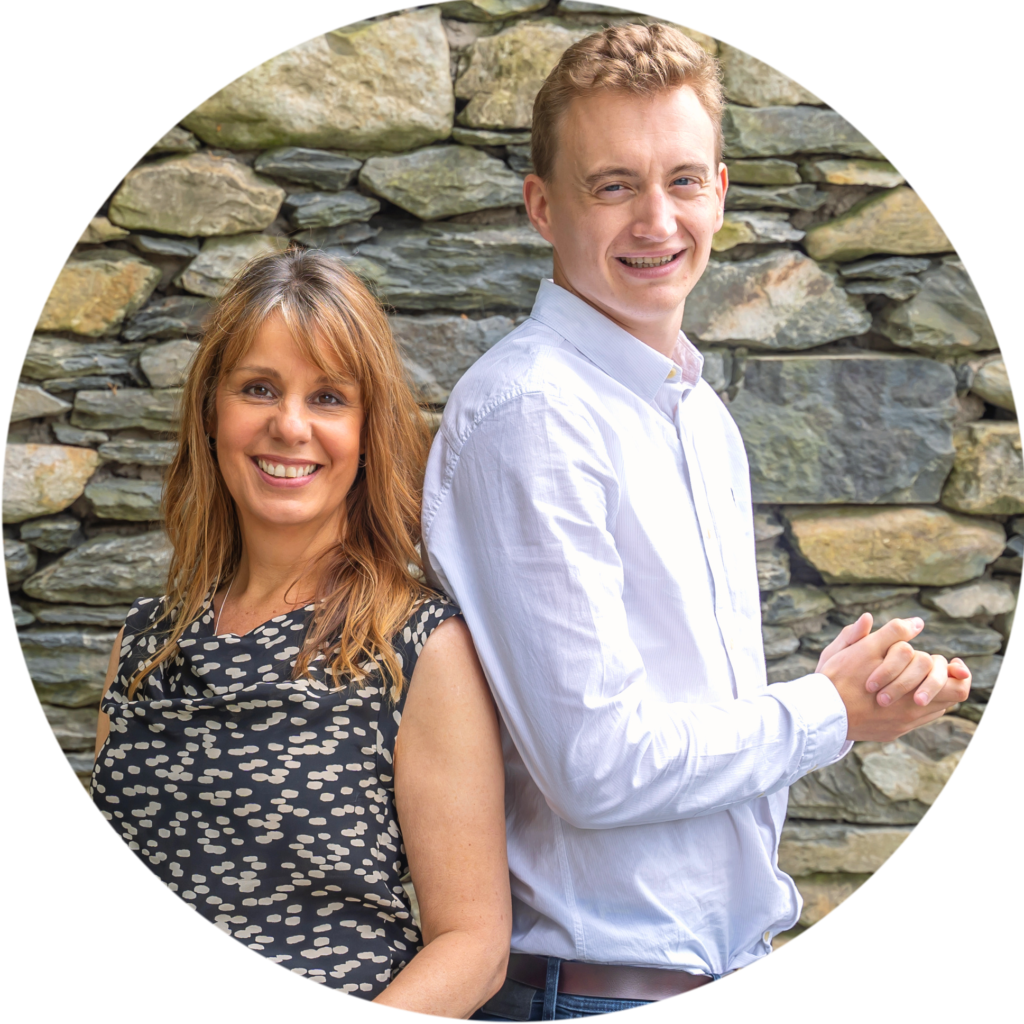
You may have seen that Watchdog recently featured Purple Bricks on their programme. Managing Director Michael Bruce was asked to comment on some viewers’ poor experiences with the company, and we were interested to hear his feedback, as you may imagine!
We at AshdownJones have several clients who were previously with ‘DIY’ agents, including Purple Bricks, and we have discovered some things you may not know about using one of these services.
We’ve compiled 9 things you may not know about selling with an online agent, and in particular Purple Bricks:
1. They’re not online agents – they are ‘DIY’ agents
We are all ‘online’. AshdownJones is online, but we are a full-service agents. Some of my industry colleagues also refer to the DIY agents as ‘call centre’ agents, which also helps to describe the difference between those, and a full-service agent.
So why would someone want to use a DIY estate agent to sell their home?
The number one reason homeowners give for using a DIY estate agent to sell their property, is to save on fees. A typical estate agent fee is 1% – 2% and this can mean a fee of £5,000 to £10,000 for a house worth £500,000.
In contrast, Purple Bricks’ fee is just £849. A considerable saving, then.
So what service do you actually get with a DIY agent?
Well, for your £849, you get a visit from one of their Local Property Experts, a written valuation, a written description, a set of photographs, a floorplan, and your property listed on all the main property portals. This means that if you are someone who available during the day, and confident about meeting brand new people, and showing them around your home, then a DIY estate agent could be a good option for you.
If however, like many people, you are out of the house during the day, and don’t feel confident about the DIY estate agency route, then engaging a full-service estate agent could be the best decision you’ll make. A full-service agency will give you a trusted adviser, who will support and guide you through the minefield that is selling your home, and take full responsibility for making sure your marketing, offer negotiation and sale progresses as smoothly as possible.
With a DIY estate agent like Purple Bricks, House Simple, Hatched, Tepilo and the rest, they are low-cost because you are required to take on a lot of the work – and responsibility – yourself.
2. Better marketing materials = more interest in your home
We love our brochures at AshdownJones. They really are beautiful, lovingly crafted using the very best lifestyle photography, wonderful words and gorgeous designs; and the results are just stunning. Our buyers adore them. We know our level of marketing consistently gets more viewings from motivated buyers, and in many cases, can even generate viewings when other agents have failed.
With a DIY estate agent, you don’t get a brochure. And when you’re selling a premium home, especially one in our beautiful Lake District, we know this is a vital part of a successful marketing campaign. We can imagine a buyer sitting in his London apartment, or her city centre house, poring over one of our elegant brochures, and planning their next trip to the Lake District with excitement.
If you think that’s important too, you’ll need a full-service estate agent.
3. Lifestyle photography catches a buyer’s attention – and their imagination
We’re lucky at AshdownJones to have a truly talented lifestyle photographer, that ‘gets’ our style. A shoot can take many hours – sometimes, the whole days, but in that time, he creates the most wonderful images of the lifestyle a buyer can expect from living in one of our clients’ homes, and that’s what we are trying to create – a vision of their potential future.
In addition to the lifestyle images we use in all our property marketing, we also commission aerial photography, to show off the position of a property, twilight images to show how warm and welcoming the home looks, just as the sun is going down, and even local photography, showing the best of the area nearby.
A DIY estate agent will usually have a local property expert who will take the photos for you, or ask you to upload your own.
If you do choose the DIY estate agent route, we would highly recommend that you do use a professional photographer. It will cost you around three to four hundred pounds, but it’s an investment in your future property sale; one that will pay dividends.
4. A professional viewings expert can motivate a higher offer.
We see viewings as where the “rubber meets the road”. After all the time and care taken to get the property looking beautiful, the best photography, the most stylish brochure and compelling online advert, the viewing is where it all matters most.
We do all the viewings for our homeowners ourselves, because we know how important it is to take a professional approach to showing a property. A really good and thorough viewing will result in a high level of detailed feedback for the owner, and we can use this feedback to refine our marketing strategy.
If you do your viewings yourself, as you need to do with a DIY estate agent, you may never hear the objections that we will, from buyers. They will simply be as polite as possible, meaning you may never know if they have any concerns or doubts about your home.
As viewing professionals, we are trained to encourage viewers to share their thoughts with us, fully and openly. In doing so, we then can judge whether we can overcome these objections for these viewers, or else take their comments as constructive feedback, and make any adjustments or amendments as necessary.
5. You need a truly local property expert to sell your home effectively
The DIY estate agent will allocate to you a local property expert, but just how local are they? In some cases, we’ve heard of a ‘local’ property expert actually living over sixty miles away.
When you’re local, you know that one street can be worth 20% above its neighbour, or that one area is shooting up in value. A remote expert can only look at the public information, which shows precedent: how much each property has sold for, and when. A truly local expert will know the back story to a sale, not publicly available. And it’s this inside information you’re paying a full-service agent for. Because that information could be priceless to you.
6. A DIY estate agent fee may be false economy
There is a vast array of DIY estate agents in the UK, ranging from an upfront fee of around £400, to over £1000, plus success fees. There are also complicating factors, such as where you live and whether you’d like to defer the fee.
Some DIY estate agents, such as Purple Bricks, regard a deferment as a loan. This means that when you choose to defer payment of the sale fee until sale, you are essentially entering into a credit agreement, as this review details. Thus if you have a disagreement about the fee with Purple Bricks, it will be a lender who will chase you for payment, potentially damaging your credit rating.
Unlike a full-service estate agent, a DIY estate agent will usually charge you for any ‘extras’, like your for sale board, a floorplan and viewings.
Without getting the right level of property marketing to showcase your home, and expertise to guide you through all your tricky decisions, you can never be sure you aren’t underselling your house.
We were invited out to a home near Grasmere that wasn’t selling, despite having been on the market with a DIY estate agent for four months. It was such a beautiful home, and clearly very attractively priced, that we were genuinely astonished to hear it had not had a single viewing.
We adjusted the price upwards by £5,000, commissioned our signature lifestyle photography, created a magazine-style brochure and carefully crafted the online description. It looked stunning. Within 16 hours, we had our first viewing, and by the fifth day on the market, we had an offer. Had our clients remained with the DIY estate agents, we’re sure they would still be on the market now, and possibly even considering a price drop. How much could they have cost themselves, with their decision to use a DIY estate agent?
7. Your house is only sold when the ink is dry on the contract
Getting an offer on a property is a very exciting event for our clients, and for us. But an offer is only the very opening page of the story. With one out of three sales in the UK falling through after an offer is accepted, we know we need to do everything in our power to make sure your precious offer proceeds to a successful sale. So we take your offer, and we nurture it; guiding it through every obstacle, complication, query, challenge and hurdle.
This means we have to be like a dog with a bone, never letting go whilst there is still a chance for us to reach a successful outcome. So we need to talk to the solicitors, as well as our client, and their buyer, openly and often. We need to hear first-hand if there are any wobbles, up or down the chain, to make sure we catch them early, and reassure/explain/negotiate as necessary. After all, as a full-service estate agent, we don’t get paid until the money is in your bank.
This is not always the case with a DIY estate agent. Firstly, with an upfront fee, there is no financial incentive for the agent to make sure that your sale completes. Also, when a buyer wants to make an offer on your property, they simply submit it online, and you either accept or reject their offer. This is not negotiation, and it won’t help to make sure you get the very best sale price for your property. Say your home is for sale for £600,000, and someone offers £550,000 online; you don’t want to scare them off with an outright ‘no’, but how do you negotiate in the comments section of the offer message? Negotiation is a skilled and delicate process (ask any hostage negotiator) and attempting diplomatic discussions on an online form is like trying to run an egg and spoon race blindfolded; you may reach your destination eventually, but it’s likely to be arduous and you may well arrive without your precious cargo.

8. Using a DIY estate agent means your house will be on the market for longer
Some recent independent research found that the average property for sale with Purple Bricks takes at least 28 weeks to sell.
Anthony Codling, residential property analyst, analysed the properties marked on Purple Bricks’ website as being ‘sold’ in Birmingham, Bournemouth and Southampton and discovered that despite the company’s claim that ‘on average it takes us just 14 days to find a buyer’, only 14% of their clients actually sell within the first 18 weeks on the market.
If you have a premium Lake District home, worth one million pounds or more, perhaps 28 weeks sounds an acceptable time frame. But homes on the market with DIY estate agents are generally smaller and cheaper than the average. These sub-£200,000 properties sell within eight weeks on average, but with Purple Bricks, the statistics show they will take three times as long to sell. The one million pound-plus Lake District properties can easily take a year to sell, so taking the same measurement of being on the market three times as long with a DIY estate agent means your premium home could be on the market for three years or longer.
If in that time, property prices increase by, say, 4% per year, then each month that goes by could cost a one million pound property owner £3333 in lost property value increase. Three years on the market could therefore cost a very expensive £120,000.
(If you’d like to know more about how long premium homes in the Lake District take to sell, see our brand new research here.)
9. You may be able to DIY your property sale if you do this:
Some homeowners can save money using a DIY estate agent. If you’d like to try this route for yourself, then make sure you at least follow our guidelines:
- Carry out your own property valuation research to make sure you are putting your home on the market at the right price;
- Engage a professional property stylist to visit your home and advise you on how best to present it to attract viewings;
- Commission the best property lifestyle photographer you can find;
- Aerial imagery, twilight photographs and local images, all add to the way your home will look online;
- Ask a professional journalist or copywriter to describe your home beautifully;
- Find a talented graphic designer to create your bespoke brochure;
- Make sure you choose to print your brochure using only the finest grade paper from the area’s best printing firm;
- Have your own for sale board created and installed;
- Practice showing your home to friends and neighbours, and get them to ask you tricky questions;
- Be prepared to manage your own sale, by speaking to all parties as often as possible.
Our conclusion is…. Selling your home yourself takes a huge amount of time, effort and expense, but it can cost you much, much more if you get just one element wrong.
If you’re considering which route to follow when selling your home, we would like to offer you a confidential chat. We will talk you through the various options open to you, and our honest feedback on whether we think you could DIY your property sale, or whether in fact it could be a false economy for you.
Just give us a call on 015394 88811 or drop us an email at team@ashdownjones.co.uk and we look forward to talking to you very soon.
Sam and Phil

